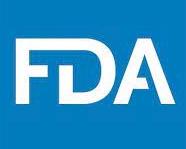 The correlation between Concentrated Animal Feeding Operations (CAFOs) and contamination of green produce with Shigella-toxin producing E.coli (STEC) grown in the Yuma Valley of Arizona and the Imperial Valley of California has been clearly demonstrated. Contaminated irrigation water is the apparent link between CAFOs and produce.
The correlation between Concentrated Animal Feeding Operations (CAFOs) and contamination of green produce with Shigella-toxin producing E.coli (STEC) grown in the Yuma Valley of Arizona and the Imperial Valley of California has been clearly demonstrated. Contaminated irrigation water is the apparent link between CAFOs and produce.
 The CDC and FDA recently investigated an outbreak of Salmonella Enteritidis with peaches as the vehicle of infection. The Centers for Disease Control diagnosed 101 cases in 17 states. Traceback suggested a specific peach grower-packer as the source of infection. The peach orchard is located in an area with a broiler grow-out farm on the northwest boundary and a dairy farm on the east side of the property.
The CDC and FDA recently investigated an outbreak of Salmonella Enteritidis with peaches as the vehicle of infection. The Centers for Disease Control diagnosed 101 cases in 17 states. Traceback suggested a specific peach grower-packer as the source of infection. The peach orchard is located in an area with a broiler grow-out farm on the northwest boundary and a dairy farm on the east side of the property.
Over 700 samples were examined, including 180 leaves from peach trees, 20 peaches, 480 environmental samples and peach products from three packing and holding facilities. The outbreak strain of SE was not identified in any of the samples. Salmonella Alachua was isolated from environmental samples and corresponded to surveillance swabs from the broiler farm. Salmonella Montevideo was common to environmental samples and the dairy farm.
Recommendations from the extensive report suggested that growers should be aware of risks associated with airborne dissemination of pathogens from adjacent CAFOs. Preventive recommendations should be applied in accordance with the Produce Safety Rule, a component of the Food Safety Modernization Act. Pre- and post harvest sampling is advised, although sampling in itself does nothing to prevent contamination of the food chain unless appropriate action is taken to interpose a kill-step in processing. The need for traceability is self-evident given the extent of the distribution of peaches purchased in stores individually or in packs.
The study conducted by the FDA demonstrated the interconnection between livestock production, orchards, packing plants, the distribution system and consumers. FDA stressed that food safety is a shared responsibility. Effectively food growers or packers should recognize the possibility (or inevitability?) of contamination of product, either through irrigation water or fugitive dust. Appropriate procedures to suppress potential pathogens are required during packing and before distribution.